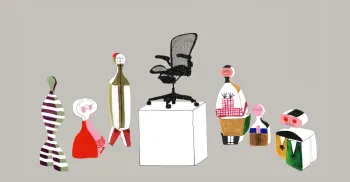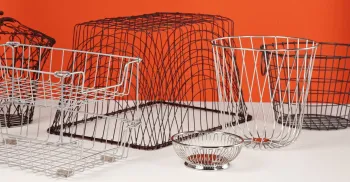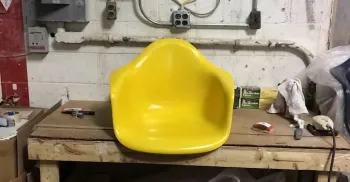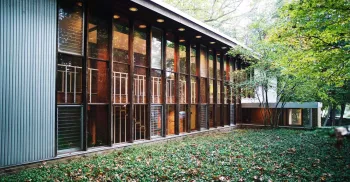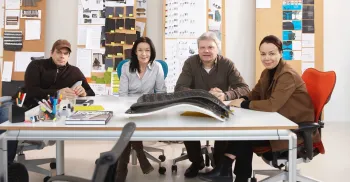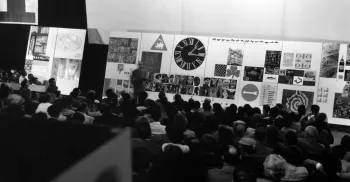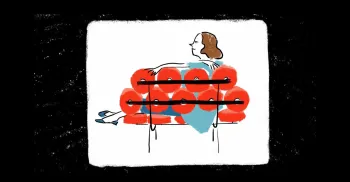Just what the doctor ordered
The story of Co/Struc’s mark on the healthcare industry 50 years ago, which set a precedent for the future
Written by: Amanda Belo
Artwork by: Peter Hoffman and Herman Miller Archives
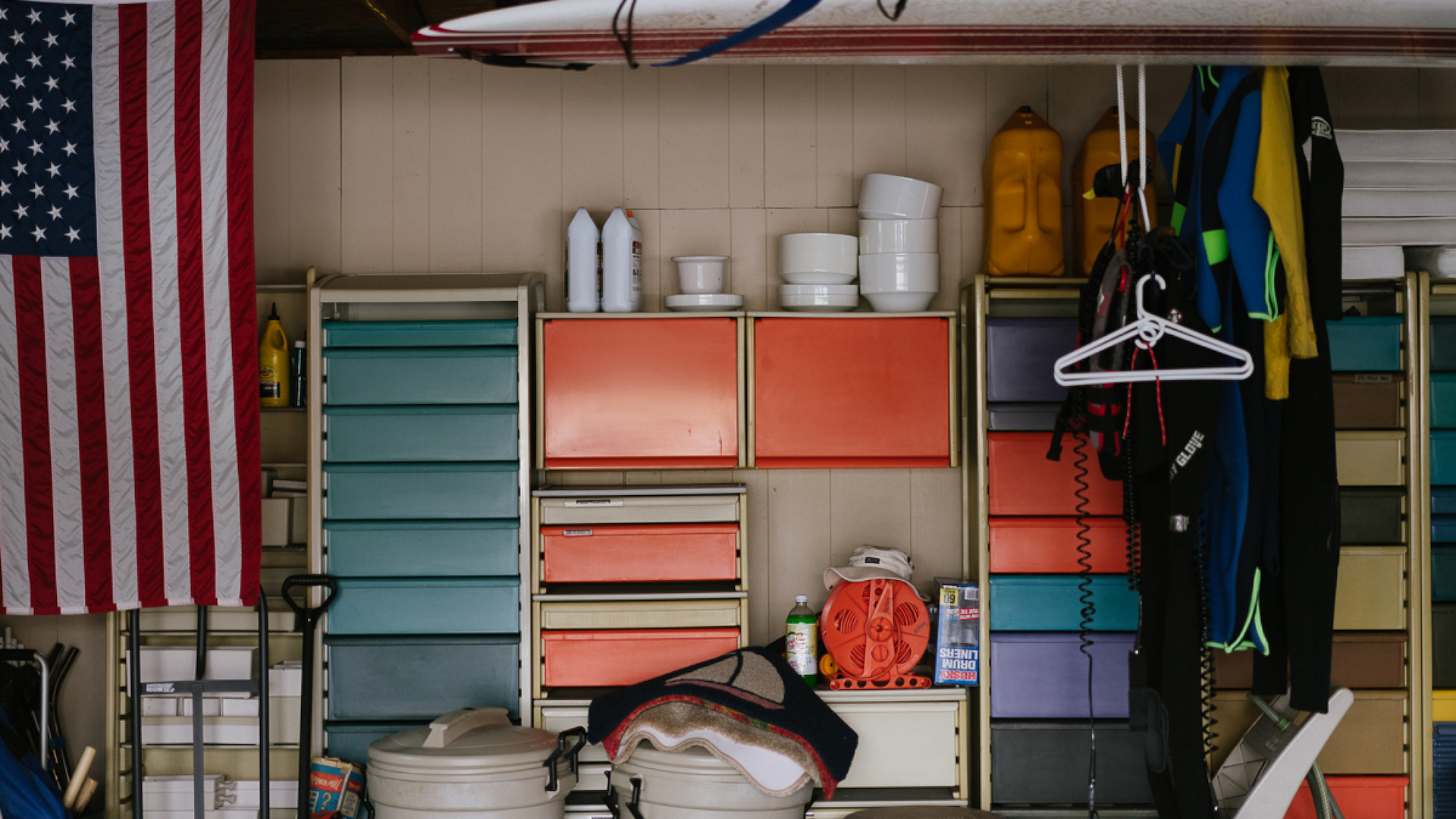
The year 1969 gets a lot of column inches in history books. It marked the end of a tumultuous decade defined by cultural revolution and social upheaval.
Fast forward a bit and you’ll find 1971 was no fallow period either. Disney World opened, McDonald’s introduced the Quarter Pounder, NPR launched its first broadcast, and Barbie went to Malibu. The Nike Swoosh, Amtrak, FedEx, NASDAQ and Starbucks all made their debuts. Greenpeace and Médecins Sans Frontières were founded to address humanitarian crises worldwide. The United Arab Emirates declared its independence, Swiss women got the right to vote and the US Supreme Court upheld bussing as a constitutional approach to integrating schools. The field of technology witnessed the invention of pocket calculators, floppy disks, the commercial microprocessor – even email.
1971 also witnessed a host of medical advances that changed thousands of lives for the better, from CT scans and soft contact lenses to the MMR vaccine. A quietly ambitious product called Co/Struc emerged at the same time, designed specifically for the medical field. Conceived by researcher Robert Propst with help from industrial designer Jack Kelley, Co/Struc made its mark on the healthcare industry by improving the work-life for everyone in patient care facilities.
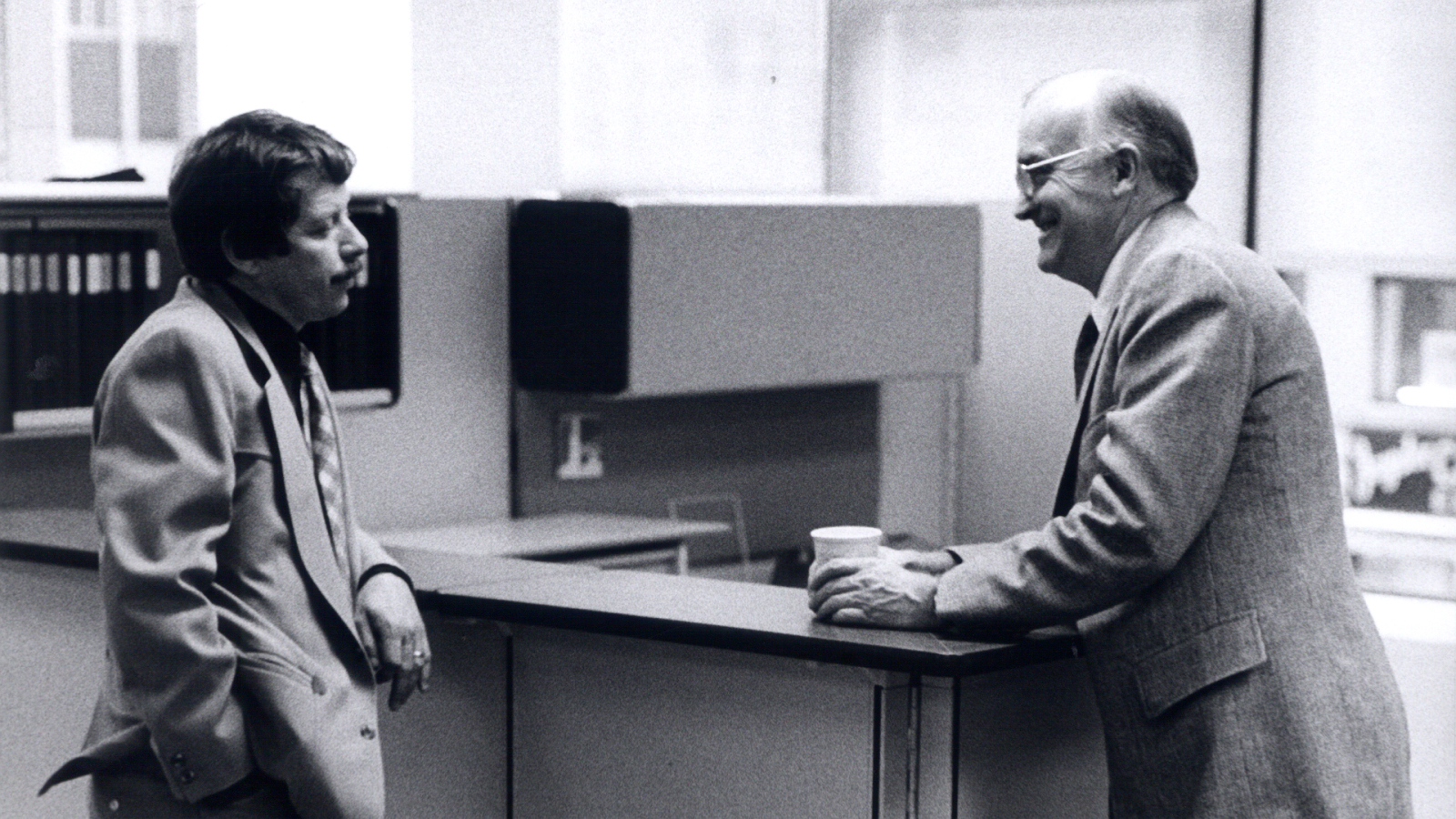
Co/Struc designers Jack Kelley and Robert Propst in conversation, c. 1989.
“Areas of serious inadequacy and failure”
Backtrack to the late 1950s. Herman Miller’s president, DJ De Pree, was looking to expand the company’s offering following the success of products designed by Charles and Ray Eames, Alexander Girard and George Nelson. The company’s bread and butter had become, essentially, chairs – but De Pree didn’t want to rely on one product category in the event of a sales downturn.
While attending the 1958 International Design Conference in Aspen, Colorado, De Pree’s chance meeting with an eccentric character named Robert Propst led Herman Miller to explore other areas outside of seating. Propst was a naturally curious individual, with an antenna for the truly innovative. A self-described “searcher”, he was known for his relentless pursuit of solving problems and an intolerance for wasting time and inefficiency. De Pree ended up appointing Propst as director of the newly formed entity called Herman Miller Research Division (HMRD) in Ann Arbor, Michigan, to further explore his point of view.
The HMRD explored numerous fields of research, including, but certainly not limited to, furniture. In its first decade, Propst and his team embarked on nearly 30 projects, one of which studied human productivity and led to the development of Action Office.
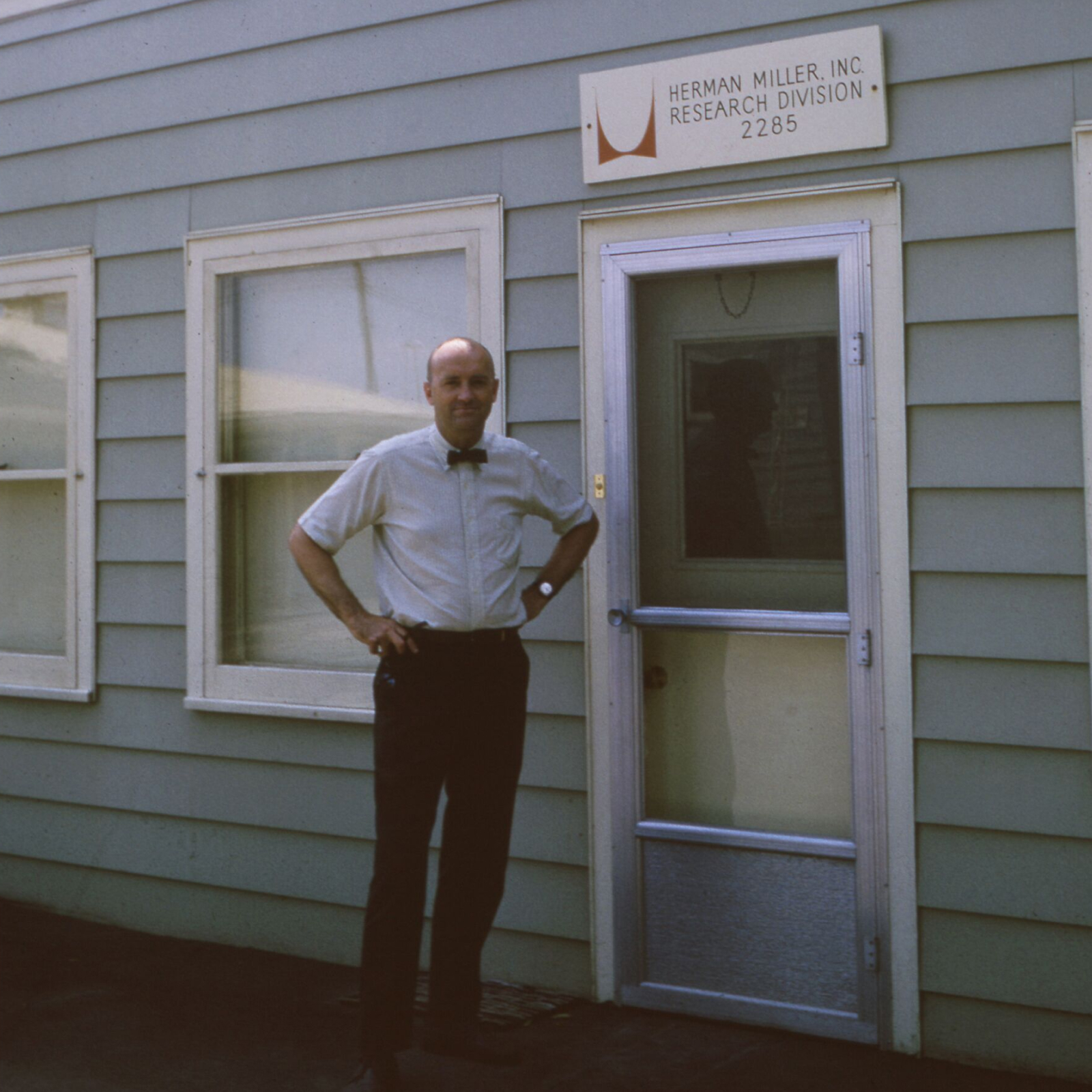
Propst standing outside of the Herman Miller Research Division building in Ann Arbor, Michigan, c. 1960.
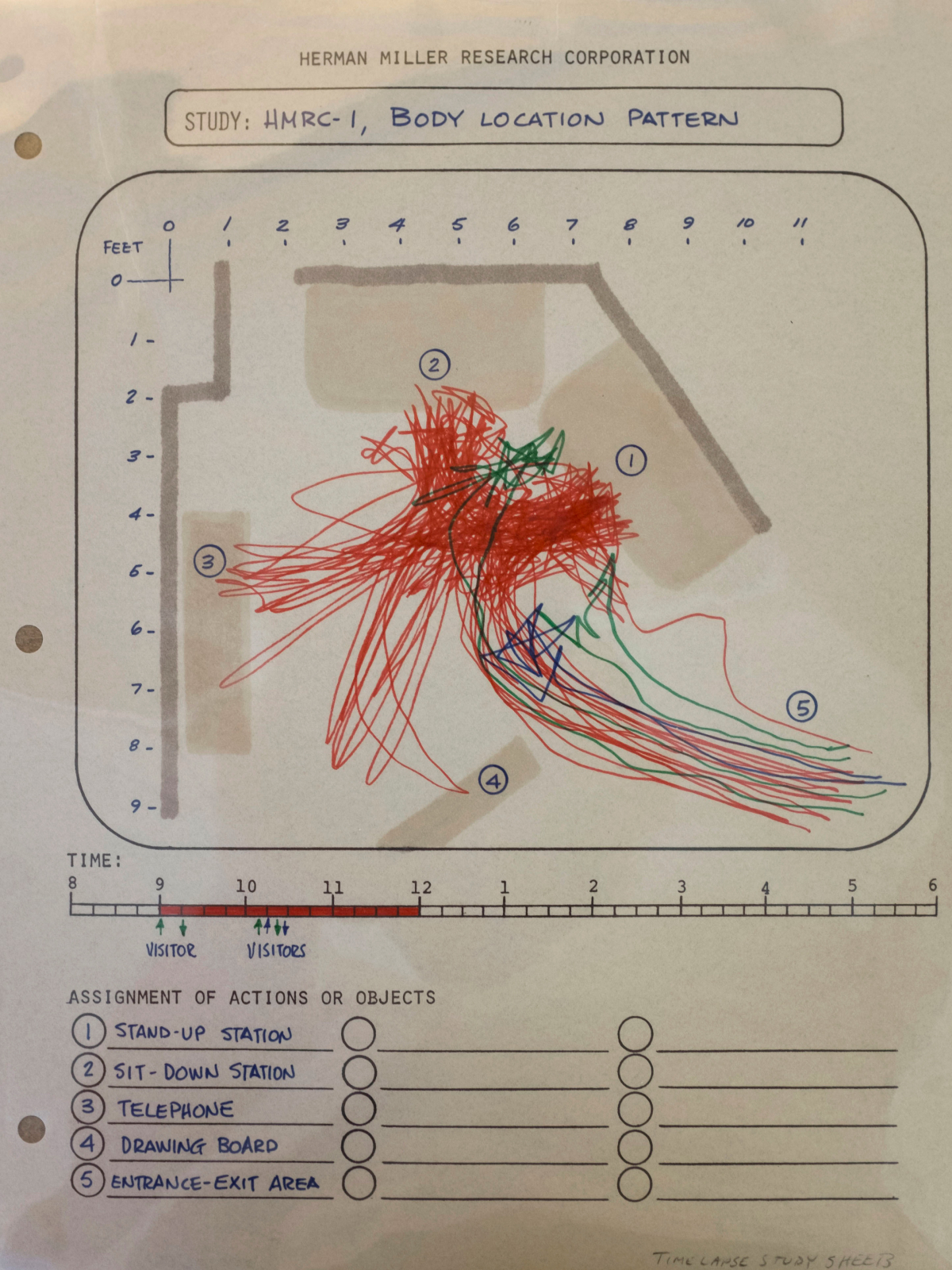
Body Location pattern study demonstrating “work arena” effect by Robert Propst, c. 1963.
“There’s nothing like it”
At its simplest, Co/Struc is a system of containers, frames, carts and rails. It was the first instance of a movable, modular system designed specifically for healthcare settings. According to Propst, its modularity was intended “to solve a series of interrelated problems with elements that produce greater results and influence by their collective impact”.
During his time leading the research division, Propst established nine criteria that formed the basis for both Action Office and Co/Struc. These nine criteria not only allow for adaptability, but also provided a theoretical foundation for the success of these products, making Co/Struc hard to duplicate without considering the principles behind it.
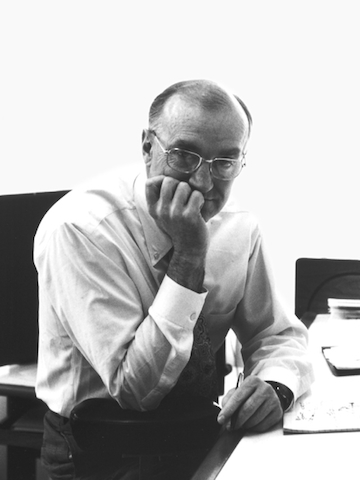
Robert Propst, c. 1989.
Propst’s Nine Criteria
- Forgiving: solutions that allow for change
- Coherent: solutions with elements that work together and integrate with other systems
- Process forwarding: solutions that make it easy and intuitive to perform tasks
- Modular limited: solutions that require fewer components but have maximum function and capability
- Open-ended: solutions that respond to new situations and needs without disrupting visual continuity
- Readily available: solutions that continue to give you what you need when you need it over time
- Replaceable: solutions with components that are easy to disassemble and upgrade without losing your initial investment
- Progressively enterable: solutions that can be updated at your own pace
- Facility renewing: solutions that help convert existing facilities to new uses and/or bring fresh capabilities to a facility

